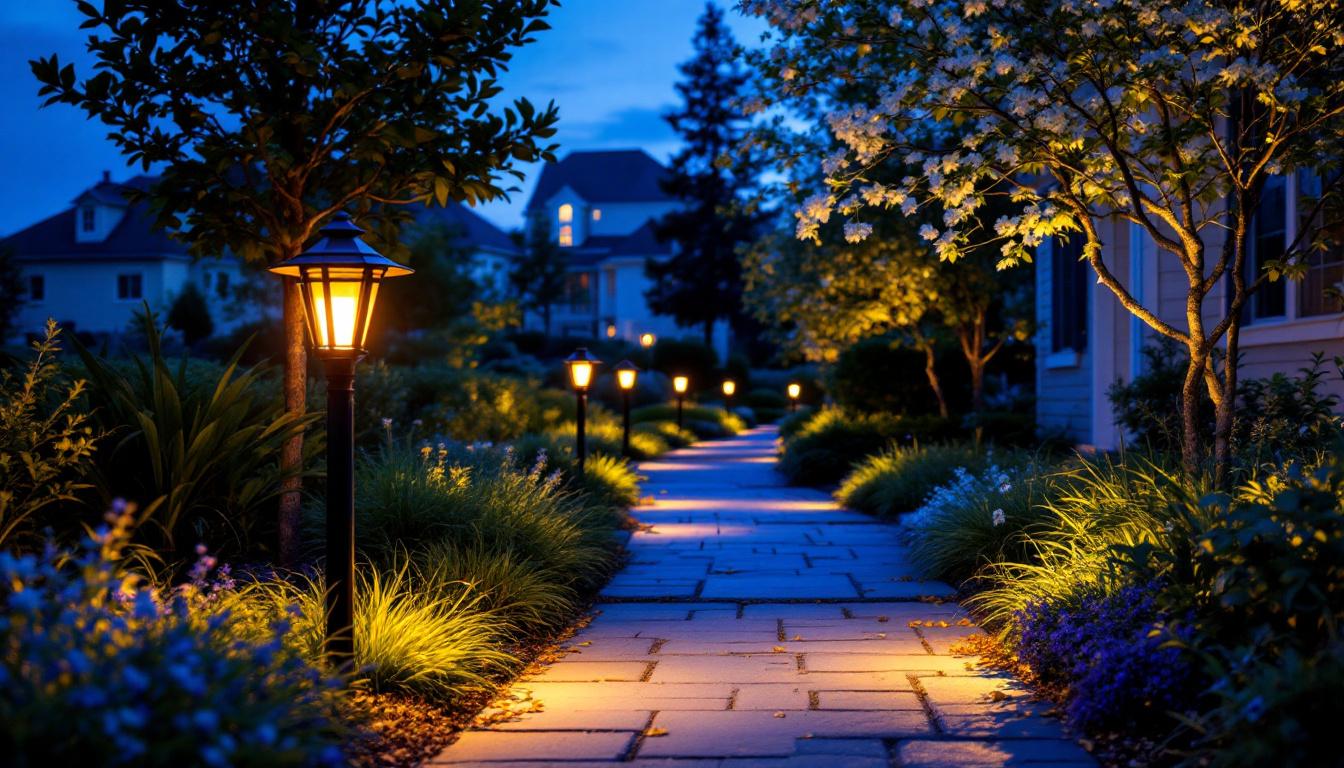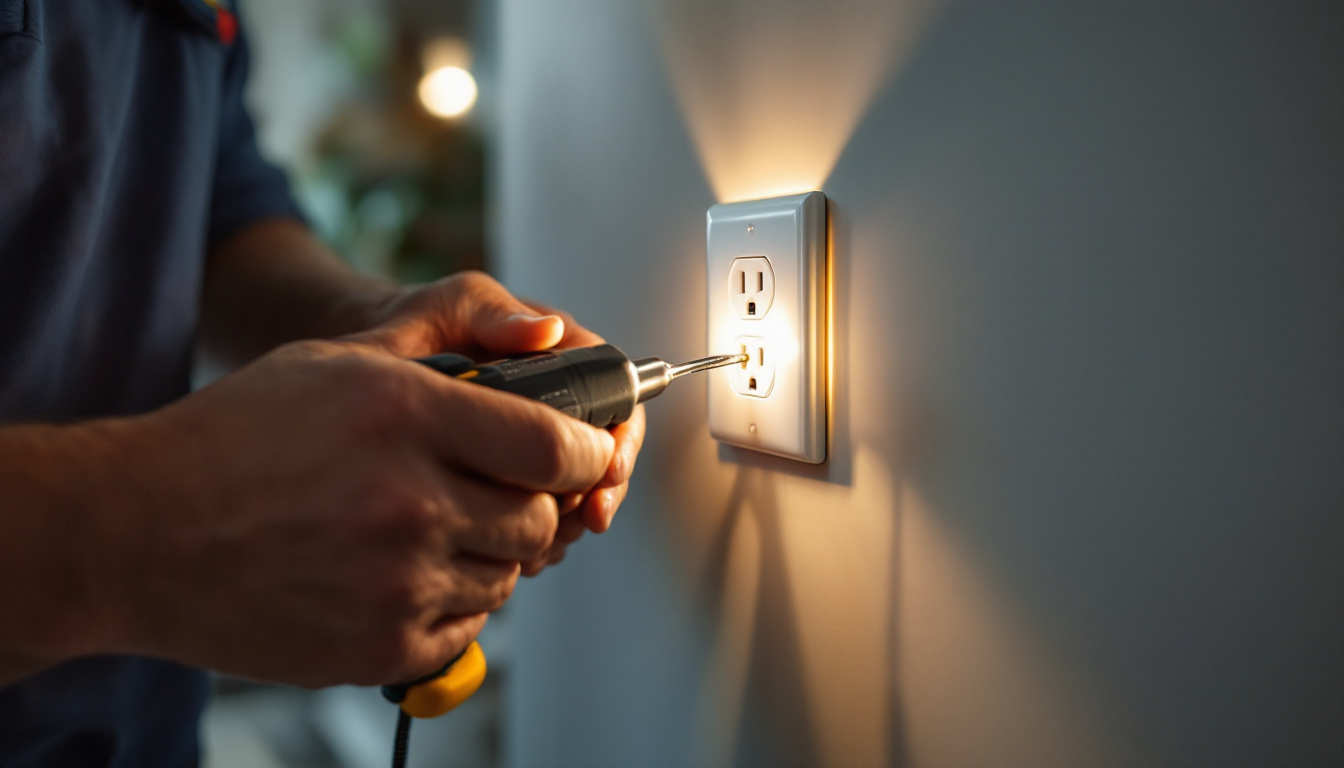
In the evolving landscape of lighting technology, Type A bulbs have gained prominence for their versatility and efficiency. For lighting contractors, understanding the nuances of these bulbs is essential to provide optimal solutions to clients. This article will delve into the characteristics, applications, and considerations surrounding Type A bulbs, equipping contractors with the knowledge needed to make informed decisions.
Type A bulbs are a staple in residential and commercial lighting, known for their traditional shape and compatibility with standard fixtures. These bulbs typically feature a pear-like shape and are designed to fit into a variety of socket types, making them a popular choice for general illumination.
The design of Type A bulbs is characterized by their A19 shape, which measures approximately 2.4 inches in diameter and 4.3 inches in height. This standardization allows for easy replacement in existing fixtures without the need for modifications. Type A bulbs are available in various wattages and color temperatures, providing flexibility to meet diverse lighting needs.
In terms of specifications, Type A bulbs can be found in incandescent, CFL (compact fluorescent), and LED (light-emitting diode) variants. Each type offers distinct advantages, with LED bulbs being the most energy-efficient option, boasting a longer lifespan and lower energy consumption compared to their incandescent counterparts. Additionally, the color temperature of Type A bulbs can range from warm white (around 2700K) to cool daylight (up to 5000K), allowing consumers to create the desired ambiance in their spaces, whether it’s a cozy living room or a bright kitchen.
One of the most significant benefits of Type A bulbs, particularly LED variants, is their energy efficiency. LED Type A bulbs consume significantly less wattage than traditional incandescent bulbs while providing the same level of brightness. This efficiency translates to lower electricity bills for consumers and reduced environmental impact.
Moreover, the lifespan of LED Type A bulbs can reach up to 25,000 hours, compared to the 1,000 hours typical of incandescent bulbs. This longevity not only reduces the frequency of replacements but also contributes to less waste, aligning with sustainability goals that many clients prioritize today. Furthermore, the reduced heat output of LED bulbs minimizes the risk of overheating fixtures, enhancing safety and longevity of both the bulb and the fixture itself. As energy standards continue to evolve, many municipalities are even offering incentives for consumers to switch to more efficient lighting options, making the transition to Type A LED bulbs not only a smart choice but also a financially savvy one.
Type A bulbs are incredibly versatile, making them suitable for a wide range of applications. Their ability to fit into standard fixtures allows them to be used in various settings, from homes to offices and retail spaces.
In residential settings, Type A bulbs are commonly used in lamps, ceiling fixtures, and recessed lighting. Their warm color temperature options create a cozy atmosphere, ideal for living rooms and bedrooms. Additionally, the availability of dimmable LED Type A bulbs offers homeowners the ability to adjust lighting levels according to their mood or activity.
Furthermore, Type A bulbs can be integrated into smart home systems, allowing for remote control and automation. This feature appeals to tech-savvy homeowners looking to enhance convenience and energy management in their living spaces. For instance, homeowners can set schedules for their lights to turn on and off, or even control them via voice commands through smart assistants, making everyday life more efficient and enjoyable.
Moreover, the aesthetic appeal of Type A bulbs cannot be overlooked. With their classic shape and variety of finishes, including frosted and clear options, they can complement any interior design style. Whether used in vintage-inspired fixtures or modern minimalist designs, Type A bulbs can enhance the overall decor while providing functional lighting.
In commercial environments, Type A bulbs serve as effective lighting solutions for offices, restaurants, and retail stores. Their ability to provide consistent and comfortable lighting is crucial for enhancing productivity and creating inviting atmospheres for customers.
In retail settings, the right lighting can significantly influence consumer behavior. Type A bulbs can be strategically placed to highlight products, creating focal points that draw attention and encourage sales. Additionally, the energy savings associated with LED Type A bulbs can be particularly beneficial for businesses looking to reduce operational costs. With the long lifespan of LED technology, businesses can also minimize maintenance and replacement expenses, allowing them to allocate resources to other areas of operation.
Furthermore, in restaurants, the ambiance created by Type A bulbs can enhance the dining experience. Soft, warm lighting can make meals more enjoyable and create an inviting atmosphere that encourages patrons to linger longer. By using dimmable options, restaurant owners can easily transition from bright lighting during busy lunch hours to a more subdued, romantic glow for evening diners, effectively setting the mood for different times of the day.
When selecting Type A bulbs, several factors should be considered to ensure optimal performance and satisfaction for clients. Understanding these factors will help lighting contractors make informed recommendations.
Wattage is a critical consideration when choosing Type A bulbs, as it directly affects brightness. For instance, a 60-watt incandescent bulb typically produces around 800 lumens, while an LED equivalent may only require 10-12 watts to achieve the same brightness. Contractors should educate clients on the importance of lumens over wattage, as this will guide them in selecting the appropriate bulb for their needs.
Additionally, it’s essential to consider the intended use of the space. For areas requiring brighter light, such as kitchens or workspaces, higher lumen output is necessary. Conversely, softer lighting may be more suitable for bedrooms or relaxation areas.
The color temperature of Type A bulbs is another crucial factor influencing the ambiance of a space. Measured in Kelvin (K), color temperatures can range from warm (2700K) to cool (5000K and above). Warm white light creates a cozy and inviting atmosphere, making it ideal for residential applications. In contrast, cooler temperatures are often preferred in commercial settings where clarity and focus are paramount.
Contractors should guide clients in selecting the appropriate color temperature based on the desired mood and functionality of the space. This consideration can significantly enhance the overall aesthetic and usability of the environment.
Proper installation of Type A bulbs is essential for ensuring safety and optimal performance. Lighting contractors must adhere to specific guidelines to avoid potential issues and ensure client satisfaction.
Before installation, it is vital to verify that the Type A bulbs are compatible with the existing fixtures. Most fixtures designed for incandescent bulbs can accommodate LED Type A bulbs without issue. However, some older fixtures may require modifications or may not support the wattage of newer LED options. Contractors should assess the fixture specifications and recommend appropriate bulbs accordingly.
Additionally, it is important to consider the dimming capabilities of the fixtures. Not all LED Type A bulbs are dimmable, and using a non-dimmable bulb in a dimming fixture can lead to flickering or even damage to the bulb. Ensuring compatibility will enhance the longevity and performance of the lighting system.
Safety should always be a priority during installation. Contractors must ensure that the power is turned off before replacing bulbs and should use proper tools to avoid injury. It is also advisable to educate clients on the importance of using bulbs that are rated for the specific environment, such as damp-rated bulbs for bathrooms or outdoor fixtures.
The lighting industry is constantly evolving, and Type A bulbs are no exception. Emerging trends and technologies are shaping the future of these bulbs, presenting new opportunities for lighting contractors.
As smart home technology continues to gain traction, the integration of smart features into Type A bulbs is becoming increasingly common. Smart Type A bulbs can be controlled via smartphone apps or voice-activated devices, allowing users to adjust brightness, color temperature, and even set schedules for their lighting.
This trend not only enhances convenience but also contributes to energy savings, as users can optimize their lighting usage based on their routines. Lighting contractors should stay informed about the latest smart lighting options to provide clients with cutting-edge solutions that meet their needs.
As energy efficiency standards become more stringent, manufacturers are continually innovating to develop Type A bulbs that consume even less energy while maintaining performance. This shift presents an opportunity for contractors to educate clients on the benefits of upgrading to the latest energy-efficient options, which can lead to significant cost savings over time.
Furthermore, as sustainability becomes a priority for many consumers, offering eco-friendly lighting solutions will enhance a contractor’s reputation and appeal to environmentally conscious clients.
Type A bulbs are a fundamental component of modern lighting solutions, offering versatility, efficiency, and aesthetic appeal. For lighting contractors, understanding the intricacies of these bulbs is essential for delivering optimal results to clients. By considering factors such as wattage, color temperature, and installation guidelines, contractors can ensure that they provide the best lighting solutions tailored to individual needs.
As the industry continues to evolve with advancements in technology and energy efficiency, staying informed about trends and innovations will empower contractors to remain competitive and meet the demands of their clients. Embracing the potential of Type A bulbs will not only enhance the quality of lighting installations but also contribute to a more sustainable future.
Ready to elevate your lighting game with the versatility and efficiency of Type A bulbs? Look no further than LumenWholesale for all your lighting needs. Our spec-grade lighting products not only meet the highest industry standards but are also available at unbeatable wholesale prices. Say goodbye to inflated markups and hello to premium lighting with free shipping on bulk orders. Don’t compromise on quality or value—choose LumenWholesale for the perfect blend of affordability and convenience. Take the first step towards a brighter future and Wholesale Lighting at the Best Value today.

Discover best practices for LED fluorescent tube lamps in this lighting contractors’ edition.

Discover how Harbor Breeze Pathway Lights can transform your lighting installation projects with enhanced aesthetics and functionality.

Discover essential insights for lighting contractors on selecting and installing duplex outlets.

Discover how using the right pulling wire tools can significantly boost the efficiency of your lighting projects.